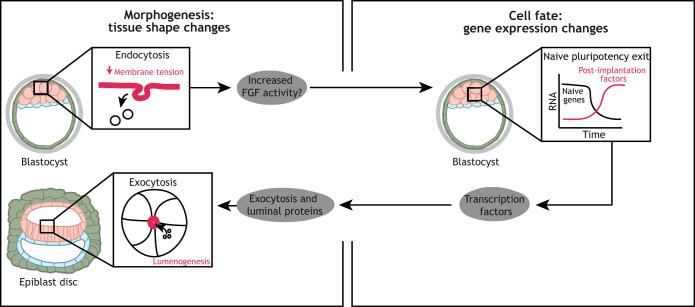Fig. 3.
Proposed cell fate-tissue shape crosstalk during human implantation development. Upon implantation, epiblast cells exit from the naïve pluripotent state and initiate the expression of post-implantation factors. Studies in mouse ESCs have shown that this is controlled by a decrease in membrane tension, which promotes endocytosis and, as a consequence, increased fibroblast growth factor (FGF) signalling activity, which is required for naïve pluripotency exit. Therefore, membrane tension affects the pluripotent state of a cell. Whether this pathway is active in human embryos remains to be explored. Upon naïve pluripotency exit, genes involved in exocytosis become expressed and initiate the process of lumenogenesis to form the amniotic cavity. Exocytic vesicles provide apical membrane and luminal proteins, which are necessary to build a lumen de novo. The transcription factors involved in this process remain to be identified. Question mark denotes a molecular event that has not beem validated in human embryos.

